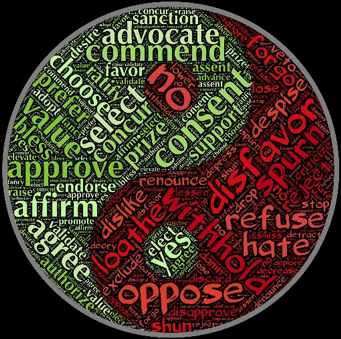Module 1 Chapter 4: Ethics Related to Intervention Research
In our prior course, you learned a great deal about research integrity and ethical issues that might arise when conducting research. All those integrity and ethical topics apply to research related to understanding social work intervention. Several additional ethical concerns are also relevant to our new course topic. In this chapter you will learn:
- distinctions between social work intervention research and practice
- four ethics topics specific to intervention research.
Is It Research or Practice?
The Belmont Report (1978) that your read about in our earlier course warrants revisiting here. The report distinguished between research and practice in this way: practice involves interventions:
“designed solely to enhance the well-being of an individual patient or client and that have a reasonable expectation of success” (p. 3).
Research was defined in the Belmont Report as:
“…an activity designed to test an hypothesis, permit conclusions to be drawn, and thereby to develop or contribute to generalizable knowledge” (p. 3).
These two types of activity are clearly contrasted—their goals are markedly different. Practice goals relate to benefits for the individuals being served; research goals are served by the individuals who participate.
The Belmont Report authors acknowledged that the boundaries between research and practice are sometimes blurred, especially when innovative, radically new, untested practices are employed. Applying an “experimental” intervention does not automatically mean that it is research; however, the report’s authors advised that such interventions should “be made the object of formal research at an early stage in order to determine whether they are safe and effective” (p. 4).
Critically important is that the client understand the distinction between what activities are part of a research study or experiment and what activities are part of receiving services. Consent for treatment or other social work services is different from consent to participate in research, and any confusion needs to be clearly untangled for clients who might be involved with both. For example, they need to understand if they are completing an assessment tool because it will inform their care plan, or if they are completing it as data for a research study.

Ethics and Intervention Research
This brings us to consideration of four categories of ethical issues that might arise in intervention research, issues that might not arise in other forms of social work scientific inquiry. In addition to the issues addressed in Module 1 of our first course, intervention research issues include: more about assessing the risk/benefit ratio, more about consent to participate, the significance of experimental and control groups, and what happens at the end of an effective intervention research study.
Risk/Benefit Ratio. The relationship between risks and benefits for participating in research was discussed in The Belmont Report as an important aspect of the beneficence principle. At the start of investigating an innovative intervention, investigators do not know all the potential risks—the intervention is still an unknown. They can make informed guesses, especially by consult the existing literature about similar interventions. But until they deliver the innovative intervention, no one knows what might happen under all circumstances. This explains why many interventions are first studied on a very small scale, putting as few people as possible at risk. This type of initial intervention research is called an efficacy study. It is conducted under carefully controlled experimental conditions, limiting the range of variability among study participants, and limiting the extent of risk exposure to relatively few participants. The goal in efficacy studies is to improve the assessment of potential risks and benefits associated with the intervention; it is not yet a goal to determine how effective the intervention might be under real-world conditions. That would be an effectiveness study, involving larger numbers of participants, a more diverse group of individuals receiving the intervention, and delivery of the intervention under more real-world condition. The risk/benefit ratio knowledge gained from efficacy studies can inform future studies about the innovation.

Consent to Participate. The Belmont Report and the NASW Code of Ethics emphasis on autonomy and self-determination apply to all research involving human participants. Guidelines and templates for informed consent procedures under many different research scenarios are available. Intervention research, however, sometimes involves special ethical concerns related to consent. Four that warrant attention are: clients’ (or patients’) dependence on the investigators to receive needed services, establishing participants’ capacity to consent, who consents in macro-level intervention research, and incentive payments,
Dependence for services. Ethical conduct of research requires that a person’s involvement is voluntary—this is part of self-determination and autonomy. A person’s decision should be free from coercion. However, investigators may not be aware of subtle forms of coercion that might influence a potential study participant’s decision. Individuals who depend on an agency, program, or practitioner for essential services may believe that consenting to participate in an offered research study is required to continue receiving good service or that it will create some form of preferential treatment. They may not feel completely free to say “No” to a request for participants, despite investigator assurances of the study’s voluntary nature. This is no different from students or employees who are fearful of negative consequences from refusing to participate in an instructor’s or employer’s study, or who consent because they believe there will be advantages in their grades or job benefits, separate from the study benefits.

These examples represent forms of coercion to which intervention research investigators must attend. A best practice is to make sure that the person engaging in soliciting study participation and the informed consent process with potential study participants is not also involved with any aspect of providing them services. This also helps minimize the potential for or appearance of a conflict of interest where practitioners might have a vested interest in the outcomes of a study—to the point their behavior either intentionally or unintentionally skews study results.
Capacity to consent. Social workers often serve individuals whose capacity for engaging in informed, considered choices is limited. For example, young children cannot provide informed consent; we must rely on a combination of parental consent and the child assenting to participate. Other examples include individuals who experience cognitive or intellectual impairment resulting from dementia, brain injury, disease, developmental disabilities, chronic substance misuse, taking certain medications, or other causes. Furthermore, it is important for social workers to understand that decision-making is powerfully affected by crisis situations—people often make decisions during a crisis or when experiencing trauma that they might not make under their normal, daily-living conditions. These are examples of potentially vulnerable populations who may require additional considerations be undertaken to ensure their protection as participants in intervention research studies.

Who consents to macro-level intervention research. While it is usually clear who should provide consent for an individual to participate in research, who should consent on behalf of “macro” level groups is not necessarily evident. Consider, for example, an innovative program or policy might have significant impact on a community’s experience. State and local policies legislating the distribution of certain substances (tobacco, alcohol, and marijuana) offer good examples of this point. When policy decision makers in some states reduced the legal drinking age from 21 to 18 years during the 1970s, there was a significant impact on high schools—many high school seniors could now legally possess and consume alcohol as could any other adult. Enforcement of underage drinking policies among friends of those 18 years old quickly overwhelmed the high schools’ ability to address other discipline concerns (see Begun, 1980). If an experiment were conducted regarding implementation of such a policy, who should be involved in providing consent? This is true for more recent changes in state or community policies regarding marijuana possession or distribution (medical or recreational) and restricting access to tobacco products for 18- to 21-year old emerging adults.
These policy “experiments” potentially have powerful effects on the experiences of individuals, families, communities, schools and other institutions—none of whom provided consent to have these “experiments” conducted in their midst. We rely on elected and appointed officials to make these decisions and evaluate their impact. These decisions are often politicized, and the evidence for their support or contradiction often lags far behind when policy changes are adopted.

Participant incentives. Study participants may be offered specific benefits as a means of motivating (incentivizing) them to participate in a research study. True of all research, but especially true of intervention studies where there may be risks associated with participation, investigators need to ensure that the offered options are not coercive incentives. In other words, that the person is not accepting excessive risk simply because of the magnitude of the incentive. This may be difficult to assess, however, because what is motivating to one person may be coercive to another. For example, a $15 meal voucher means something different to a person who is hungry and lacks resources for the next meal compared to a person who experiences a great deal of food security. A best practice is to conduct focus groups or survey measures, or consult the research literature, concerning what would be a motivating but not coercive amount and form of incentive.

 Consider each of the following scenarios, considering what amount of money or other incentives would influence YOU to become a volunteer participant in each of the following types of intervention research, knowing that you could be in the “experimental” group (no amount might be your answer, but consider what level would become coercive for YOU).
Consider each of the following scenarios, considering what amount of money or other incentives would influence YOU to become a volunteer participant in each of the following types of intervention research, knowing that you could be in the “experimental” group (no amount might be your answer, but consider what level would become coercive for YOU).
- An influenza immunization prevention study that had the potential to make you sick for up to two weeks with the flu if it does not work.
- An alcohol consumption study designed to measure how an one-time informational drinking guideline intervention affects how much alcohol it takes for you to feel “buzzed” in a laboratory setting.
- A group intervention study where members are coached to deliver positive, morale boosting statements to one another as a means of increasing amount of time spent studying and decrease procrastination on completing assignments.
- A study of severely restricted calorie intake for one month on ability to perform complex cognitive tasks related to performing well in college.
Experimental and Control Groups. Two significant potential ethical issues surround experimental studies designed with a control group.
Non-treatment control groups. First, a study might recruit a group of individuals who experience the problem for which an innovative intervention is being tested—overwhelming anxiety/panic attacks, for example. What if half of these individuals are provided with the experimental innovative intervention and the other half receive no intervention (a “non-treatment” control group)? While this study design meets scientific criteria for rigor, how do we as social work professionals feel about closing the opportunity for care to a group of individuals who came seeking services—are we okay with asking them to make an informed decision based on a 50:50 chance of receiving intervention? Despite this design’s scientific integrity it is important to consider the ethical concerns.
Instead, investigators could design the study to compare the innovative intervention with a treatment-as-usual (TAU) condition, rather than comparing it with a non-intervention control group. Or, instead of not providing any intervention to the control group, they could provide intervention later, once the study has demonstrated that it is safe and has positive effects. For this reason, individuals on a wait list for services are often engaged as a “control” group. However, it would be unethical to create a wait list simply as a means of meeting the demands of a study design.

At-risk participants. Imagine a prevention intervention study that recruits individuals at risk of developing a certain problem, but who do not yet experience that problem. Investigators do not know which of these individuals will go on to develop the problem—some most likely will not, despite having risk factors. How do we feel about the ethics of exposing all these individuals to the research burden and potential risks of the experimental intervention? Some individuals might be helped, but others were exposed to risk and burden without there being an advantage gained because they would not have developed the problem anyway.
For example, consider a study where investigators tested a school-based, group intervention for students at risk of developing an alcohol use disorder based on having been caught engaging in underage alcohol use. A portion of the students will progress to an alcohol use disorder without intervention, but onlya portion will do so, and no one is able to accurately predict which ones will do so. Are we comfortable with exposing all these students to the burden and risks—such as using their class or after-school time for the intervention and data collection sessions, and the stigma associated with being in the identified at-risk group? We lack a reliable crystal ball to predict which students have a favorable or unfavorable risk/benefit ratio.

What Happens at Study’s End. Imagine the best possible scenario for a social work intervention study: the innovative intervention was found to be safe, more effective than previously existing options, and more cost-efficient, too. Now imagine what happens to individuals who were receiving the superior intervention when the study is complete. Agencies and programs may not be ready to adopt the innovation immediately—it will take time to generate the resources needed to implement the new intervention as a routine practice. What does this mean for individuals who were benefitting from the innovative intervention during the study? What arrangements are the investigators ethically responsible for making to ensure that study participants continue to progress toward their goals, without interruption or the disruption of having to switch to a different intervention or interventionist?
This is not an issue if the studied intervention is naturally terminated as individuals reach their goals—for example, a smoking cessation intervention might naturally be withdrawn through client termination processes as each individual reaches a predetermined milestone (e.g., six months tobacco free). It is an issue when the intervention is about maintenance of intervention goals when a chronic condition is involved—for example, maintaining job and housing security among persons with schizophrenia. A transition plan needs to be developed and implemented, preferably before the study begins. This might be practiced in medication assisted treatment (MAT) studies testing the effectiveness of medication supported recovery from alcohol or other substance use disorders—along with behavioral interventions and counseling. Participants for whom the experimental medications were working need a pathway for access being maintained on those medications while the Federal Drug Administration (FDA) process progresses on the road toward approved use with the general population.

Chapter Summary
In this chapter, you learned about several ethical concerns that might arise in conjunction with intervention research—concerns over and above those that occur with all research involving human participants. First, we explored the important distinction between research and practice. Next, we examined concerns related to the risk/benefit ratio for intervention research and how knowledge from efficacy and effectiveness studies relates to risk/benefit decisions. Then we analyzed several intervention research consent issues, including potential participants’ dependence on services and how this might influence consent decisions, potential participants’ capacity to consent, who provides consent for macro-level intervention research, and the coercive potential of some incentive payment plans. The ethical concerns that arise with study designs involving non-intervention control groups and how investigators need to ensure continued care following an intervention study’s conclusion were also addressed.
